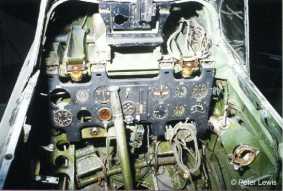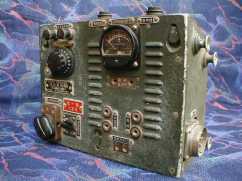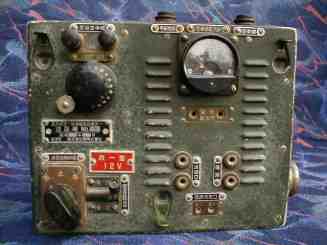Mitsubishi A6M Reisen
'Zero'
Aircraft Series

All text material on this site is
© Peter Lewis
1985, 1999
unless otherwise acknowledged
All text material on this site is
© Peter Lewis
1985, 1999
unless otherwise acknowledged

Avionics
Normal provision in this aircraft type was for a full
radio fit, including direction finding equipment. The fit normally consisted
of a radio direction indicator at the lower left of the instrument panel;
its control unit on a console on the right side of the cockpit just
to the rear of the inertia  starting
handle; a radio control unit on another console located to the rear
of this; a loop antenna behind the pilot's head inside the transparent
cover, with its control handle a the rear of the radio control unit;
and a wooden mast at the rear of the cockpit cover to support the radio
aerial which ran from the mast to the top of the fin. A transformer
and battery were located inside the fuselage behind the pilot's seat.
starting
handle; a radio control unit on another console located to the rear
of this; a loop antenna behind the pilot's head inside the transparent
cover, with its control handle a the rear of the radio control unit;
and a wooden mast at the rear of the cockpit cover to support the radio
aerial which ran from the mast to the top of the fin. A transformer
and battery were located inside the fuselage behind the pilot's seat.
The Model 11 was fitted with a Type 96-Ku-1 radio and a Type 1 Ku-3
direction finder/homer. Some samples of this equipment have survived,
and John Groff of Springboro, OH USA, has supplied photographs of a
Type 96 radio that has come into his possession.
 "Navy
Type 96-1 Transmitter photos are provided courtesy of and are Copyright
© 1999 to John Groff (jgroff@erinet.com) and cannot be reproduced without
express written permission." http://homepages.go.com/~johng99/albums/Radio_Component
"Navy
Type 96-1 Transmitter photos are provided courtesy of and are Copyright
© 1999 to John Groff (jgroff@erinet.com) and cannot be reproduced without
express written permission." http://homepages.go.com/~johng99/albums/Radio_Component
The Model 22's equipment would have been similar, but no reports on the aircraft at the time of its discovery or transport to New Zealand mention any such equipment. Neither the loop or mast appear in any photographs of the aircraft at any stage, and the instruments listed as at December 1945 make no mention of radio equipment being present. This absence is not surprising, as the lack of spares and the absence of Japanese ground installations on Bougainville would probably have made radio superfluous.
